Leadership Development Tools to Empower Your Leaders and Teams
May 26, 2025Effective leadership is crucial for an organization's success. In this article, we'll take a look at powerful leadership development tools that can transform mediocre leadership into consistent, action-taking leadership.
Effective leadership is crucial for an organization’s success. Yet many companies struggle with inconsistent leadership quality, which directly impacts employee engagement, performance, and retention.
In 2025, Gartner’s HR priorities survey shows that leader and manager development tops the list, with 75% of HR leaders reporting that managers are overwhelmed and not properly equipped to lead change, culture, and employee development.
In this article, I’ll share powerful leadership development tools that can transform mediocre leadership into consistent, action-taking leadership. I’ll also explain how modern software solutions are changing the leadership development game by making it more personalized, timely, and effective.
What Is Leadership Development?
Leadership development, or leadership enablement, is a holistic approach to ensuring leaders have all the knowledge, support, and skills needed to lead effectively. In practical terms, it involves several key components:
- Data capture - Collecting engagement metrics, performance data, feedback, and collaboration analytics
- Insight generation - Combining this data with company resources like culture handbooks and leadership principles
- Targeted guidance - Providing timely, situation-specific recommendations based on the leader’s unique challenges
- Action facilitation - Supporting leaders in taking meaningful steps to improve their teams
The ultimate goal is to enhance leadership quality across the organization, making excellence the norm rather than the exception.
Explore Leadership Enablement
Turn insights into action with Teamspective's Leadership Enablement solution.
Top 10 Leadership Development Tools
Leadership development tools come in various forms, from comprehensive software platforms to specific assessment methodologies.
You should consider investing in leadership development tools when:
- Leadership quality is inconsistent across your organization
- You have many new leaders being promoted into management positions
- You notice specific issues with leadership performance affecting team outcomes
- You want to scale leadership development across many leaders efficiently
Here are ten powerful options to consider:
1. Teamspective - Leadership Enablement Platform

Teamspective is a comprehensive solution for Organizational Performance Enablement that combines engagement, performance, and collaboration insights into one platform. It’s built on the mission of normalizing excellent leadership by using AI to help leaders proactively enhance employee engagement and company culture.
How it supports leadership development: Teamspective takes a unique approach to leadership enablement by collecting data from multiple sources and combining it with company resources to identify priority areas for improvement. The platform then delivers personalized guidance aligned with your company’s leadership principles, recommending specific actions leaders can take to address challenges. By integrating with communication tools like Slack and Teams, Teamspective makes leadership development part of the daily workflow, ensuring high adoption rates and consistent implementation of best practices.
2. ProofHub - All-in-one Project and People Management Platform
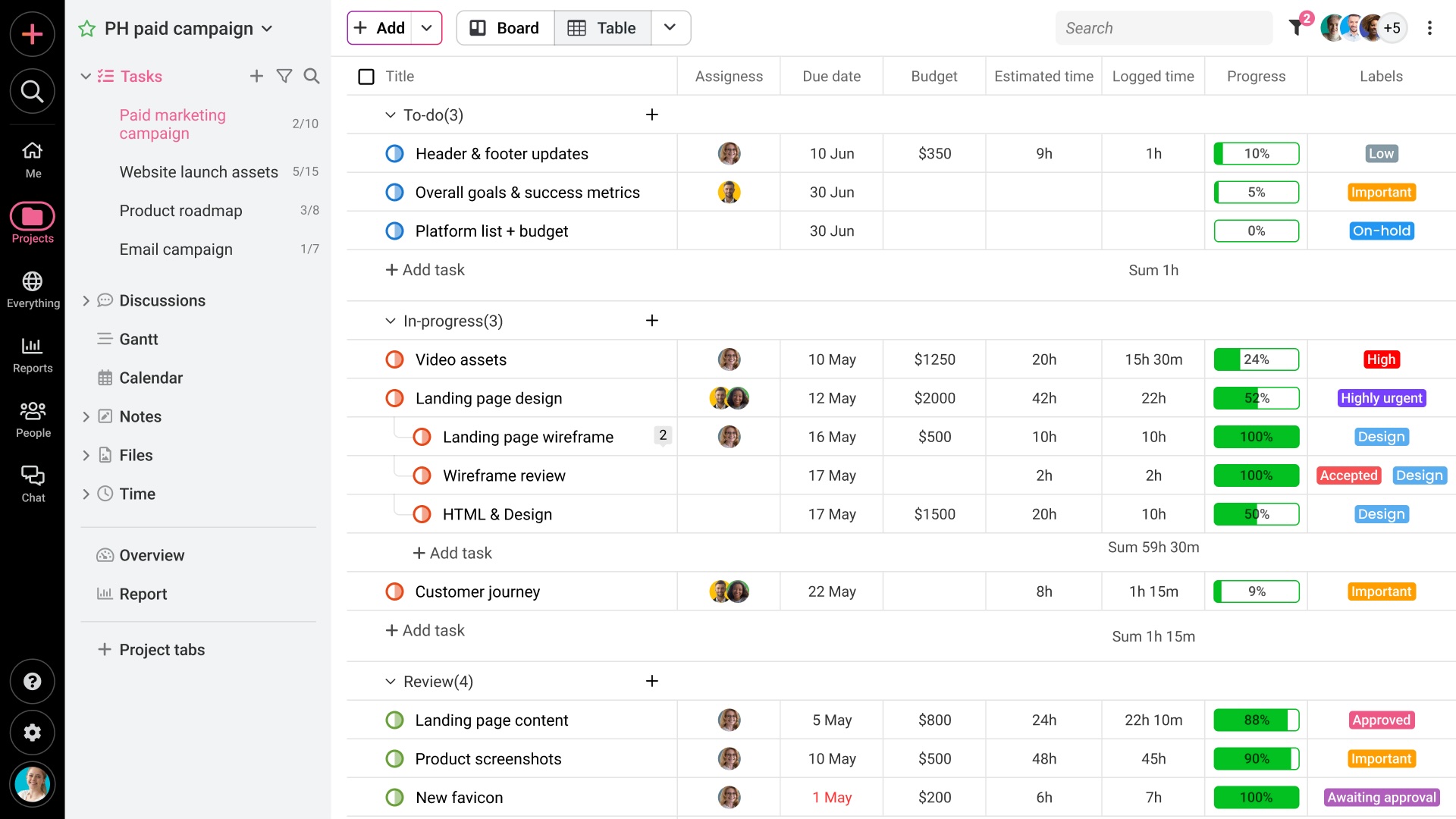
ProofHub combines project management with people management capabilities, giving leaders visibility into team workloads, progress, and potential bottlenecks. This centralized platform helps leaders assign tasks, track time, and communicate more effectively with their teams.
How it supports leadership development: ProofHub creates structured environments where leaders can practice delegation, prioritization, and team coordination. The platform’s visibility into workflows helps leaders identify team strengths and challenges, creating targeted coaching opportunities.
3. Slack - Communication Platform
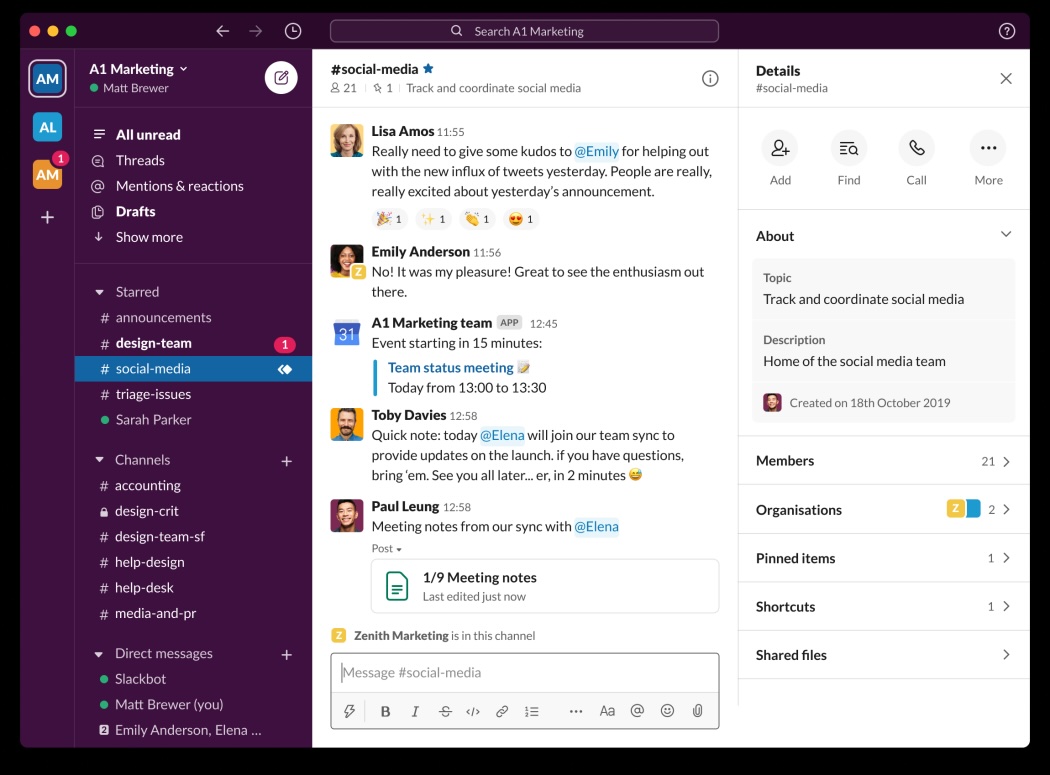
While primarily a communication tool, Slack can be a powerful leadership development asset when used strategically. It facilitates transparent communication, provides a platform for recognition and feedback, and integrates with many leadership development solutions.
How it supports leadership development: Slack enables real-time coaching, public recognition, and continuous feedback opportunities. Leaders develop communication skills by practicing clarity in digital environments while receiving leadership insights directly in their workflow.
4. Udemy - Learning Platform
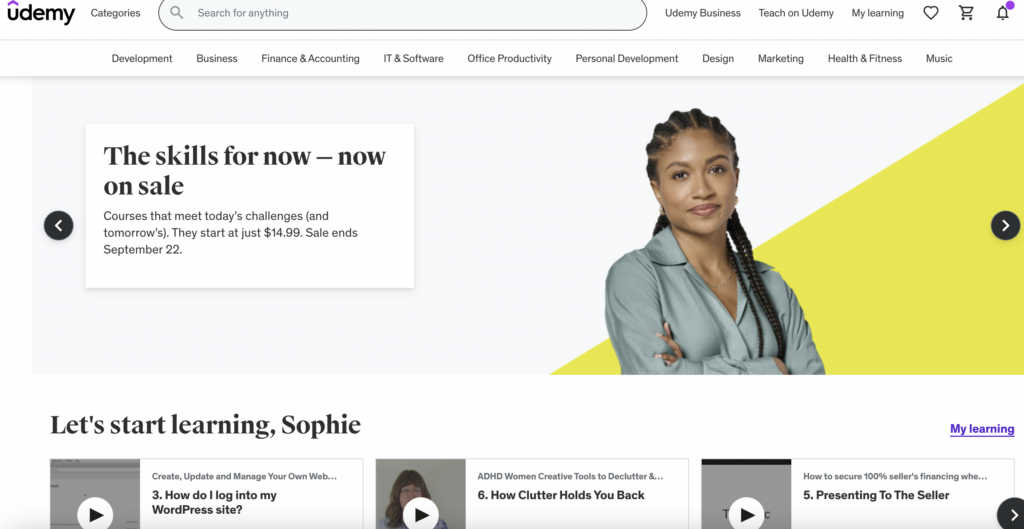
Udemy offers thousands of leadership courses covering everything from emotional intelligence to strategic planning. Leaders can access targeted learning content at their own pace, making it ideal for continuous development in specific skill areas.
How it supports leadership development: Udemy provides on-demand courses addressing specific skill gaps when leaders need them most. The platform’s flexibility enables just-in-time learning when facing new challenges or responsibilities.
5. Simply.coach - Coaching Platform
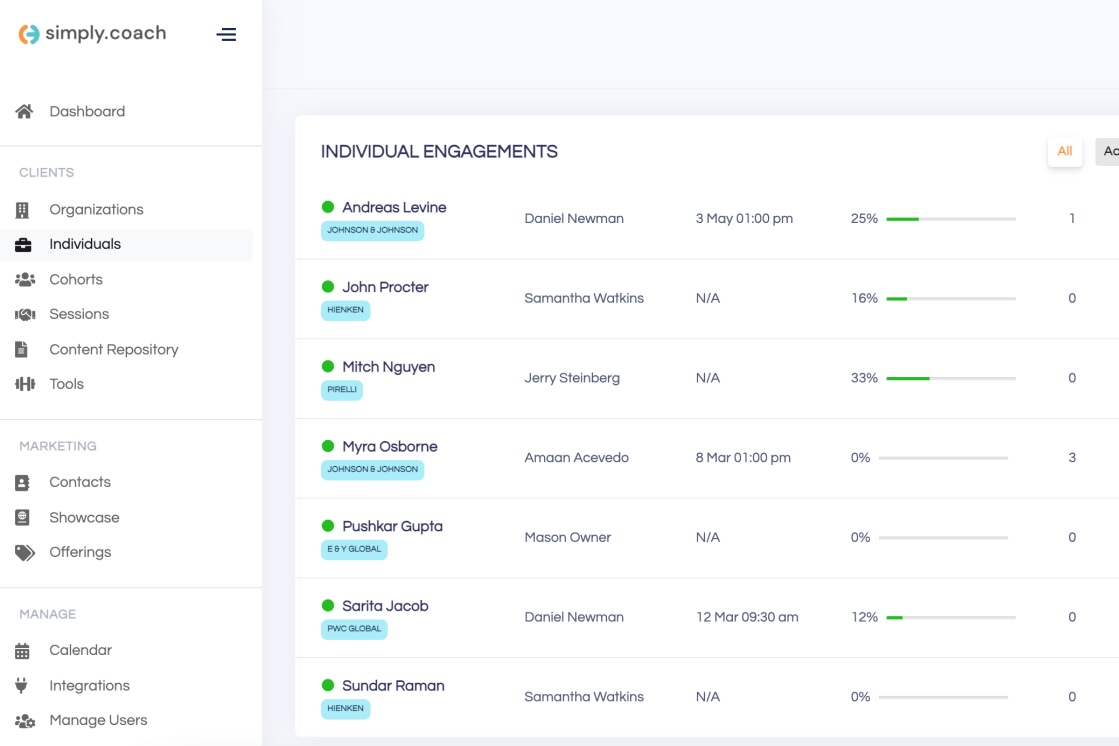
This platform helps organizations deliver structured coaching programs at scale. It provides a framework for setting goals, tracking progress, and documenting leadership growth over time.
How it supports leadership development: Simply.coach systematizes coaching processes, making them consistent and measurable across the organization. It structures goal-setting and accountability mechanisms that transform coaching conversations into actionable development plans.
6. Skills Matrix
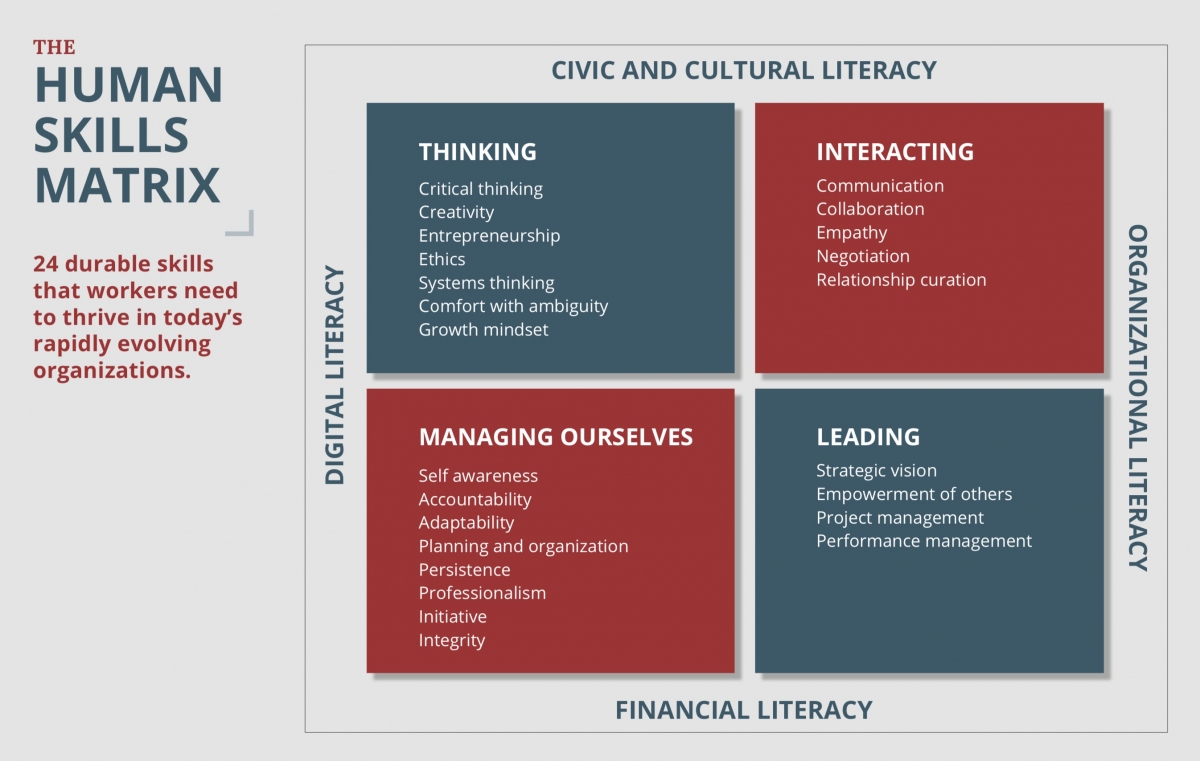
Source: Human Skills Matrix
A skills matrix is a visual tool that maps team members’ skills against required competencies. Leaders can use this to identify development needs, plan succession, and make more informed decisions about project assignments.
How it supports leadership development: A skills matrix supports leadership development by providing objective data for talent management decisions. Leaders develop strategic thinking by identifying skill gaps at the team level and planning development activities accordingly. The matrix also supports succession planning, helping leaders think longer-term about team composition and growth. Using a skills matrix regularly encourages leaders to have more structured career development conversations with team members, strengthening their coaching skills.
7. Leadership Blind Spot Assessment
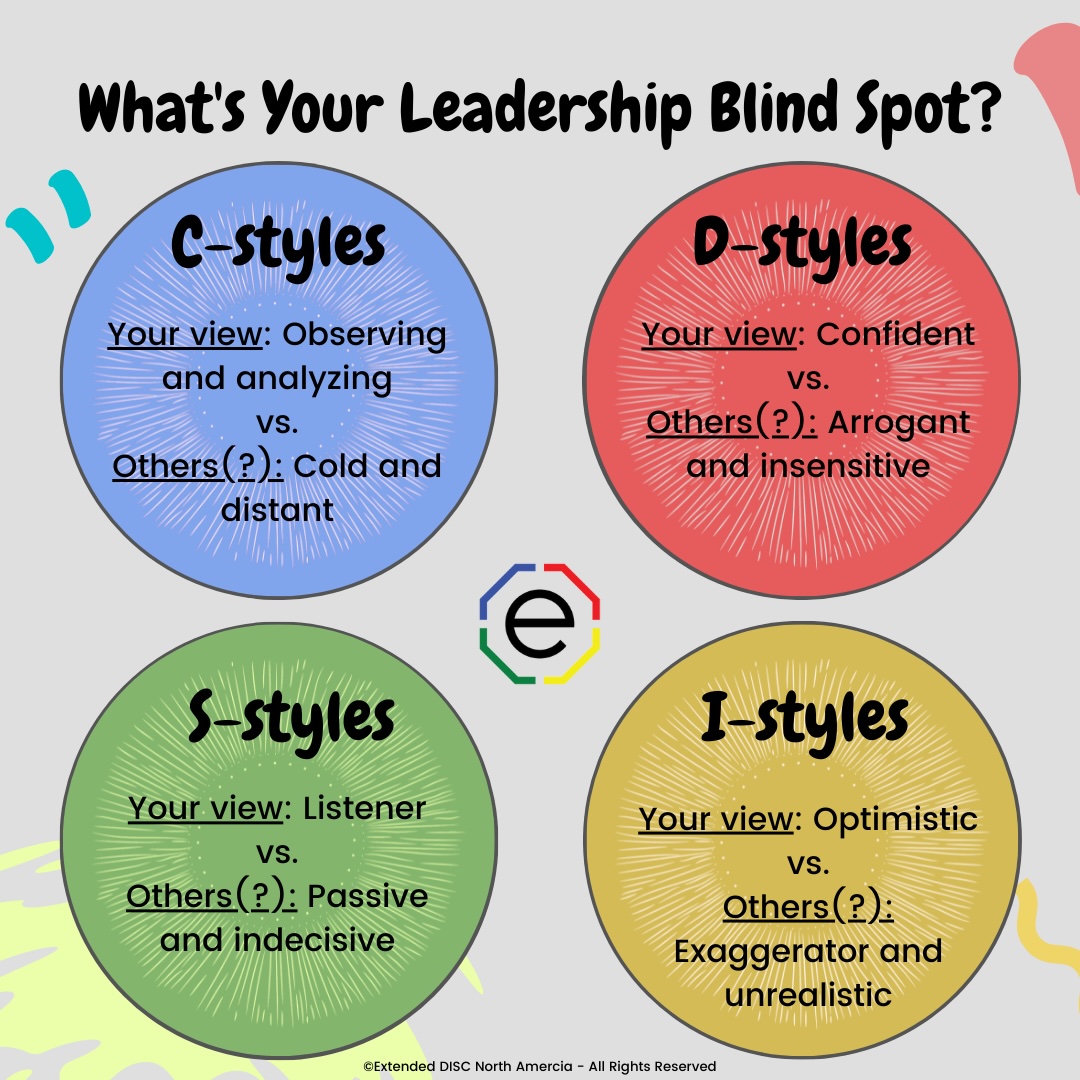
Source: What Are Your Leadership Blind Spots?
This assessment methodology helps leaders identify areas where their self-perception differs from how others see them. Recognizing these blind spots is often the first step toward meaningful leadership improvement.
How it supports leadership development: Blind spot assessments build self-awareness by comparing self-ratings with others’ feedback. This helps leaders understand the gap between intention and impact, revealing why certain approaches aren’t achieving desired results.
8. Harvard’s Implicit Association Test
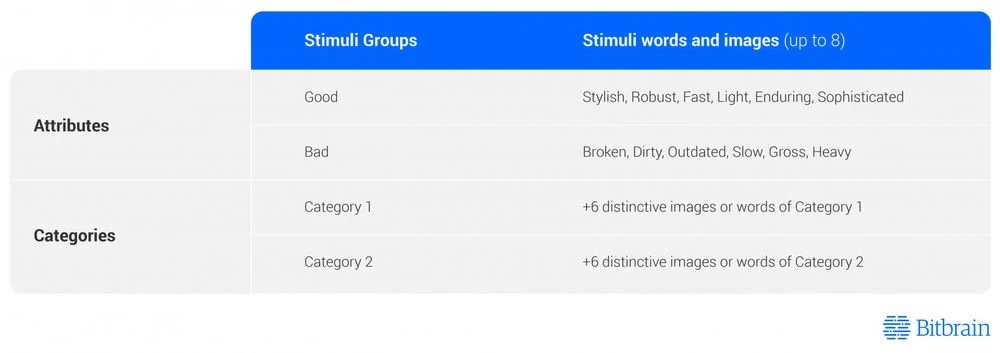
Source: What is an Implicit Association Test (IAT)?
This assessment helps leaders understand their unconscious biases, which can significantly impact decision-making and team dynamics. Greater awareness of these biases helps leaders make more equitable decisions.
How it supports leadership development: The IAT reveals unconscious biases affecting leadership effectiveness and decision-making. It encourages leaders to implement checks and balances to counteract bias, developing more equitable approaches to talent management.
9. Clifton Strengths Assessment
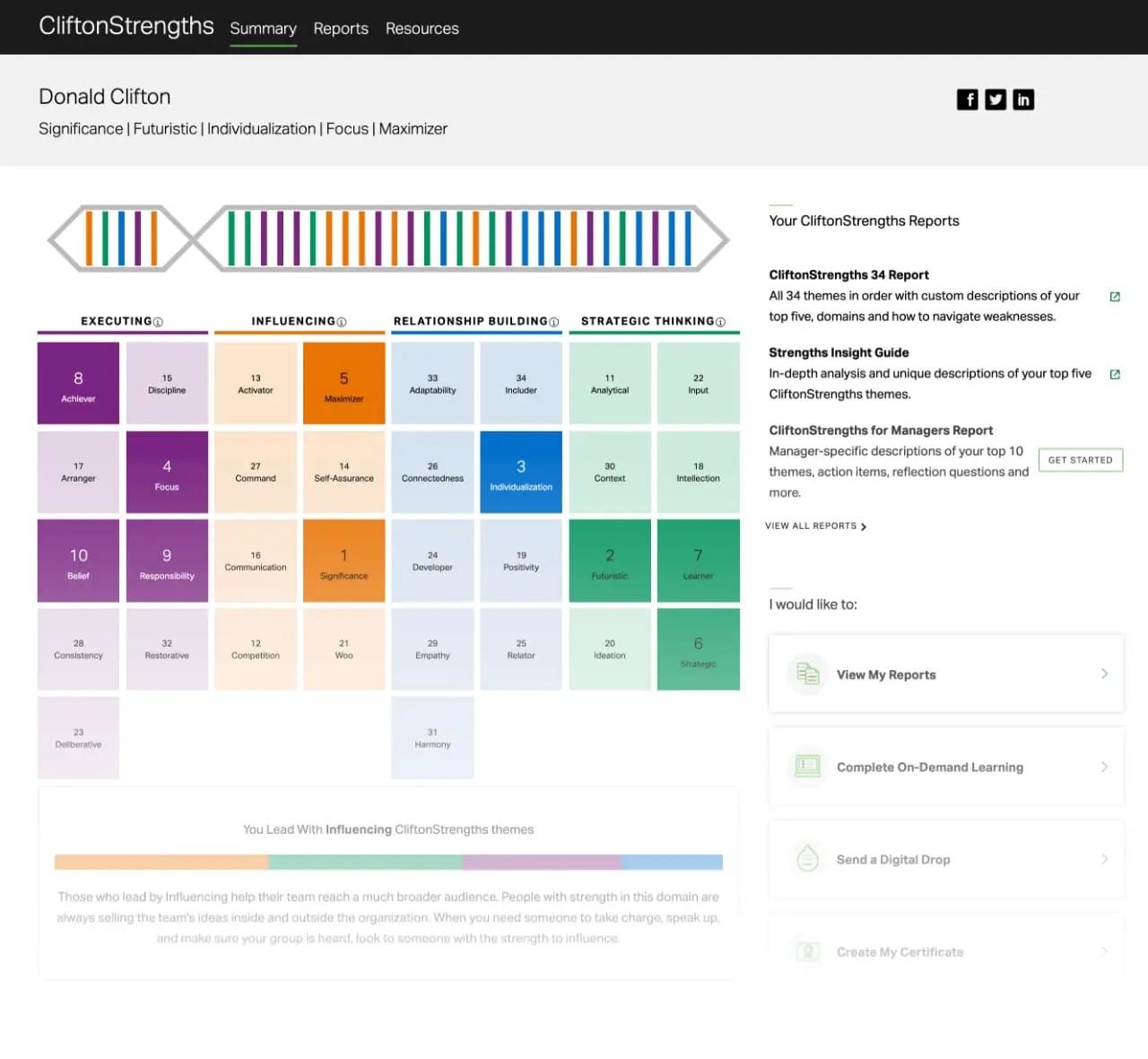
Source: Use the CliftonStrengths Assessment to Discover & Develop Your Greatest Talents
Based on positive psychology, this tool helps leaders identify their natural talents and strengths. When leaders understand and leverage their strengths, they can lead more authentically and effectively.
How it supports leadership development: The Clifton Strengths Assessment supports leadership development by focusing on strengths rather than deficits, which research shows leads to higher performance. Leaders gain insight into their natural talents and learn to intentionally develop them into strengths. This assessment also helps leaders recognize and appreciate different strength profiles in team members, improving their ability to delegate effectively and build complementary teams. Leaders who understand their strengths can be more authentic in their leadership style rather than trying to emulate others.
10. Optimal Thinking Leadership Assessment
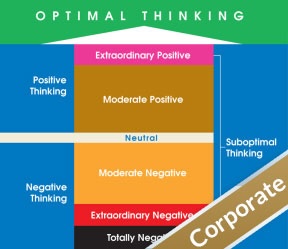
Source: Customized Assessments to Optimize Business Performance
This assessment helps leaders recognize when they fall into suboptimal thinking patterns. By identifying these patterns, leaders can develop strategies to shift toward more productive approaches.
How it supports leadership development: This assessment helps leaders recognize limiting thought patterns holding them back in decision-making. It provides frameworks for shifting from reactive to proactive thinking, improving response to leadership challenges.
How Software Enables Continuous Leadership Development
Traditional leadership development often fails because it’s too infrequent and generic. Modern software solutions are changing this paradigm in several important ways:
Enabling More Frequent Insights
Without modern tools, there’s simply too much manual work involved in collecting data, sharing it with relevant people, summarizing it, structuring discussions, and documenting outcomes. This administrative burden means development conversations happen less frequently than they should.
With platforms like Teamspective, much of this process can be automated, making it practical to have monthly or even more frequent check-ins instead of annual reviews. Leaders receive timely feedback when it’s most relevant, creating a continuous learning environment.
Delivering Personalized Guidance Through AI
A major missed opportunity in traditional leadership development is the inability to provide personalized guidance at scale. Typically, all leaders read the same handbooks or take the same courses, regardless of their specific challenges.
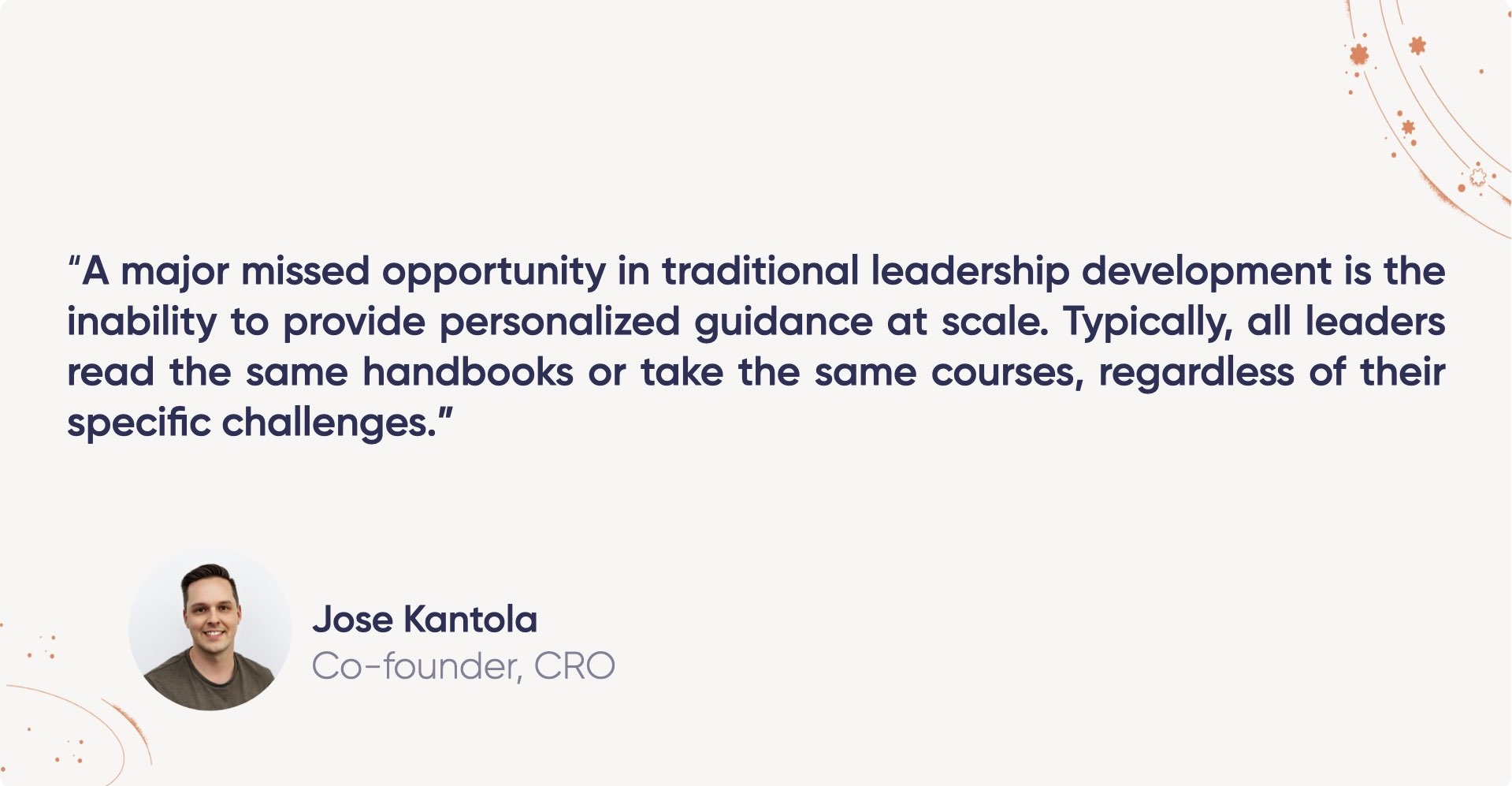
Modern AI-powered platforms can combine feedback data, the leader’s specific role, and standard company resources to generate highly relevant recommendations. Instead of generic advice, leaders receive guidance that addresses their particular situation: “Based on recent feedback about communication clarity, here are specific talking points for your next team meeting.”
Accelerating Time to Action
The most significant impact comes from dramatically reducing the time between insight and action. Traditional processes might look like this:
- Collect feedback
- Schedule time to review it (perhaps days or weeks later)
- Analyze the data
- Develop an action plan
- Finally take action
With automated analysis and AI guidance, leaders can move from data collection to action within hours rather than weeks. This acceleration means issues are addressed while they’re still relevant, and the impact of changes can be measured much sooner.
The Impact of Leadership Development Tools
One of the most common questions executives ask is: “How will we know if this is working?” The answer depends on what pain points you’re addressing, but here are some general guidelines:
Short-Term Impact Indicators
When implemented well, leadership development tools should show measurable impact within weeks, not months. For example, if you’re addressing employee engagement issues:
- Implement an employee survey tool to keep the pulse on the workforce’s engagement and satisfaction rates
- Provide leaders with specific action recommendations
- Run a follow-up survey in 4-8 weeks
- Compare the results
Organizations using Teamspective have seen up to 50% time savings in leadership development processes. For instance, ZoomInfo reduced the time it takes to go through 360 feedback with leaders by 50%, while still improving the quality of those conversations.
Watch the full webinar here.
The Executive Perspective Gap
One crucial insight I’ve observed with customers is that executive teams often perceive situations very differently than the rest of the organization. In one recent case, a company with about 1,000 employees ran an engagement survey, and the results showed a 20% difference between how the executive team viewed the organization versus everyone else.
On topics like communication clarity, strategy understanding, and collaboration effectiveness, executives consistently rated the company much higher than employees did. This highlights why objective measurement through proper tools is so important. Relying on executive perception alone can lead to addressing the wrong issues.
Making Leadership Excellence the Norm
The cost of mediocre leadership is enormous but often hidden. When leaders are inconsistent or overwhelmed, it leads to higher employee turnover, team friction, and reduced performance. These costs can persist for years without being attributed to their root cause.
Leadership development tools help make these connections visible and provide clear paths to improvement. By implementing the right mix of leadership development tools, you create a virtuous cycle where leaders receive timely, relevant feedback, implement these actions quickly, while results improve and get measured.
This continuous cycle transforms leadership from a scattered, inconsistent practice into a data-informed, action-oriented discipline that delivers measurable results for your organization.
Are you ready to make leadership excellence the norm in your organization?** Get your demo today!**



